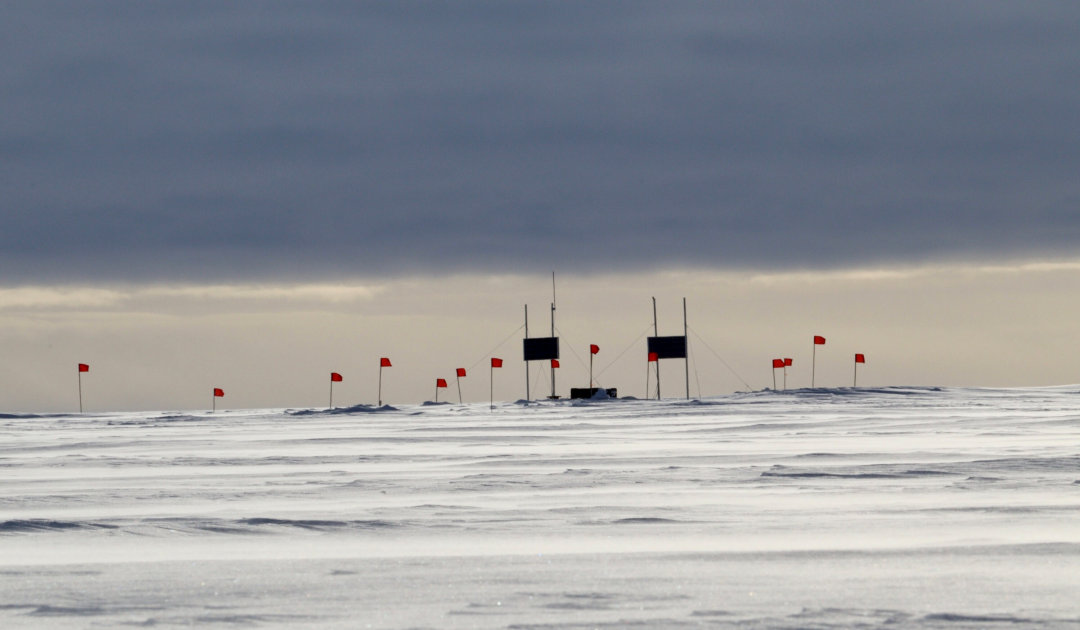
Antarctica is not only a paradise for tourists, biologists, climatologists and glaciologists. Astrophysicists who are on the trail of the secrets of the universe also find ideal conditions there to hunt down neutrinos, mysterious particles from the depths of the cosmos. Now a new research project aims to detect even more energetic, but rarer particles in the icy expanses of Greenland. Curtain up for the Radio Neutrino Observatory in Greenland.
The project, known as RNO-G, is unique in its scope and nature and has pioneering character: in the middle of the Greenland ice sheet, around the Summit Station, 35 antenna systems will be sunk into the ice at a depth of one hundred metres. Each station is 1.25 kilometres away from the other and together they form a network via wireless network that is to use radio waves to detect the energy-rich cosmic neutrinos, uncharged elementary particles that penetrate all matter. According to the researchers involved, the aim is to open the window to the cosmos further and learn more about cosmic rays and energy. Several partners are involved in the project and among them are the German Electron Synchrotron Research Centre DESY and the Universities of Chicago, Wisconsin and Penn State.

Cosmic rays are constantly hitting our planet and science has known about the phenomenon for some time. But the sources of this radiation cannot be precisely located due to magnetic fields in space. Neutrinos are supposed to help solve this mystery. But even these particles are not so easy to detect. For they penetrate us and everything else in their path virtually unimpeded. Only rarely do the energetic particles collide with an atom. But this impact is a big one, and what follows is an avalanche of electrically charged particles that are accelerated, generating radio waves. And this is exactly what the research team wants to catch. So a detection of cosmic rays around three corners. “The advantage of radio waves is that ice is quite transparent to them,” explains DESY physicist Christoph Welling, who is currently part of the project team on Greenland. “This means we can detect radio signals over distances of several kilometres.”

“In neutrino research, you need patience”.
Professor Anne Nelles, DESY
The higher the energy of the neutrinos, the stronger the signal. But at the same time, the frequency of such events decreases. That is why more and, above all, larger detectors need to be created, says DESY researcher Ilse Plaisier. Currently, the most famous detector is located in the middle of Antarctica and protrudes about one kilometre into the ice. The IceCube, in operation since 2010, has also had some success detecting neutrinos coming from spectacular sources, such as a disrupted star. Nevertheless, the yield is modest so far. The RNO-G team hopes to change this, but at the same time warns against too much optimism. “In neutrino research, you need patience,” explains Anne Nelles from DESY. “High-energy neutrinos are incredibly rare to catch. But when you catch one, the information content is incredible.” The Greenland facility could catch up to three neutrinos a year. And this is just the beginning: if the project is successful, the concept for a new detector system, the IceCube-Gen2 in Antarctica, could be launched. The project involves deploying antennas over some 500 square kilometres and linking them to the existing system. This is because the two systems complement each other very well and could thus increase the detection of neutrinos to up to 10 per hour, says Anne Nelles. But for now, patience is needed until the facility around Summit Station can show success from deep space.
Dr Michael Wenger, PolarJournal
More on the subject:





